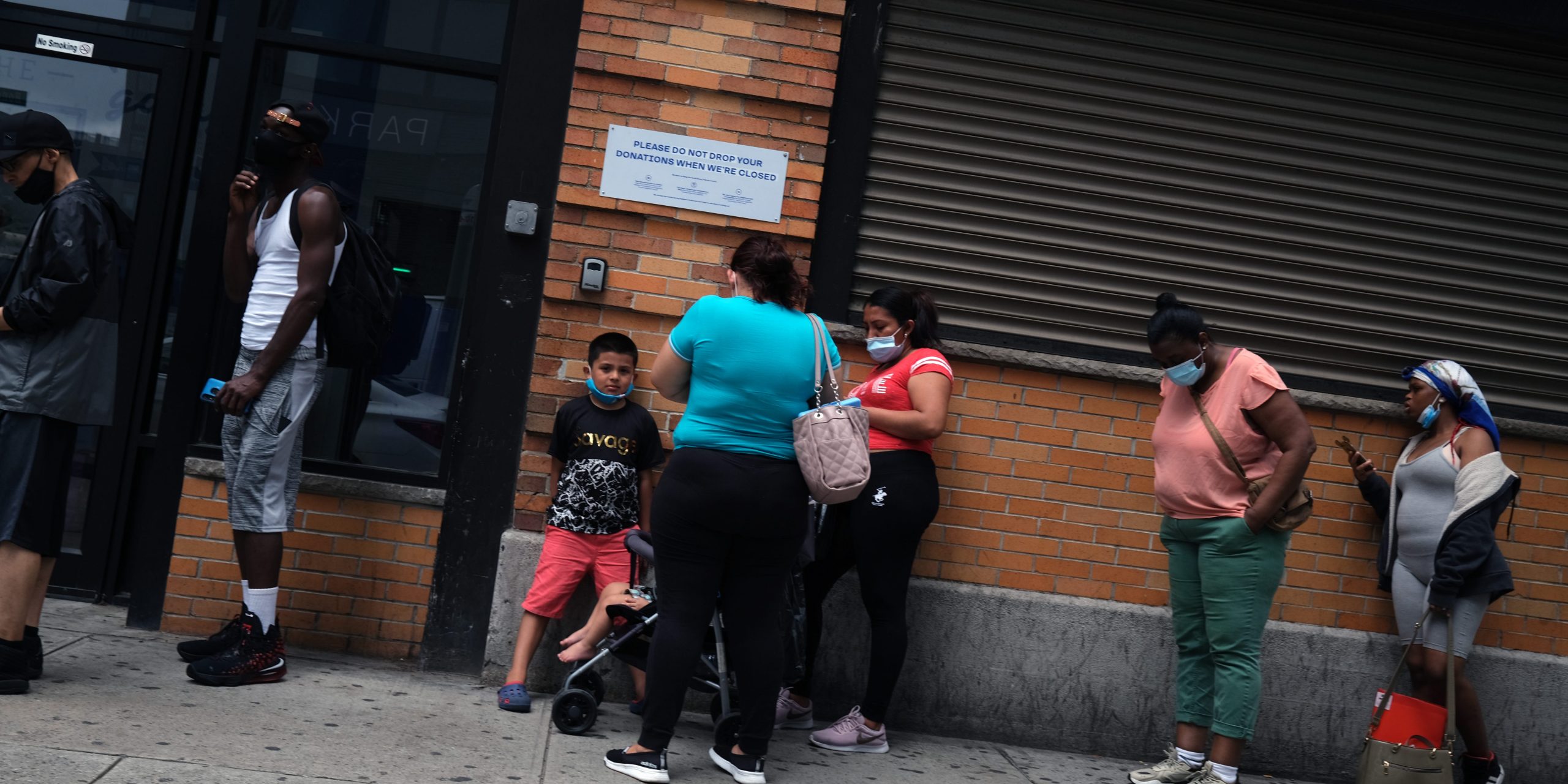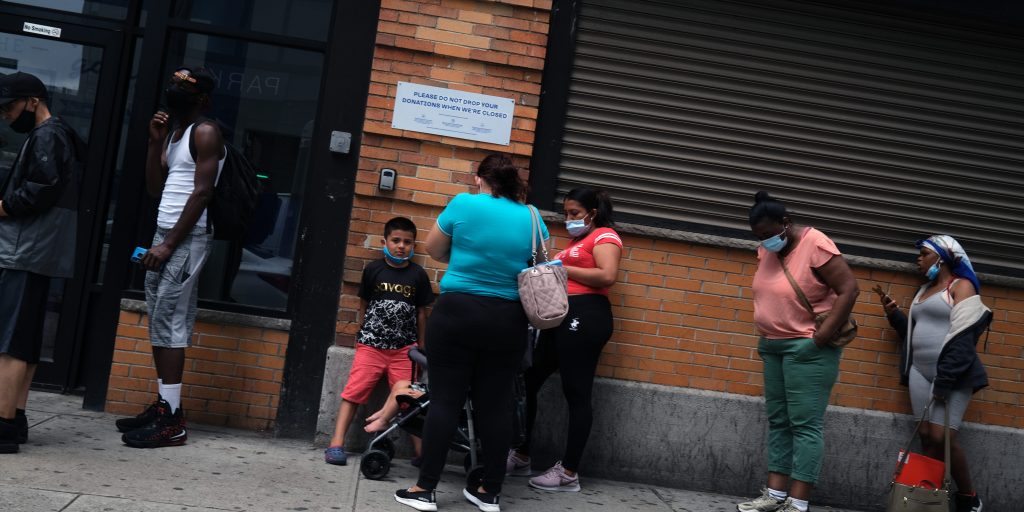
- Weekly jobless claims fell to 290,000 last week, landing at a new pandemic-era low.
- Economists expected filings for unemployment benefits to edge higher to 300,000.
- Continuing claims fell to 2.48 million for the week that ended October 9, also beating estimates.
Filings for unemployment insurance slid again last week, placing them at another pandemic-era low.
Jobless claims reached 290,000 last week, the Labor Department said Thursday. The median estimate from economists surveyed by Bloomberg was for a slight increase to 300,000 claims. The print marked a third consecutive decline.
The previous week's total was revised to 296,000 from 293,000.
Continuing claims – which count Americans filing for ongoing unemployment insurance benefits – dipped to 2.48 million for the week that ended October 9. That beat the median estimate of 2.55 million claims. The print also placed continuing claims at another pandemic-era low.
Claims resumed their slide to fresh lows last week after hovering at elevated levels through much of September. Weekly claims are still higher than the pre-crisis average of about 200,000, and continuing claims have yet to return to their 2019 lows of about 1.7 million. Still, the steady decline suggests more Americans are finding work, and that fewer are being laid off.
The Thursday report follows a similarly encouraging update on Americans' spending through the Delta wave. Spending at US retailers and restaurants unexpectedly rose 0.7% in September to $625 billion, beating forecasts for a 0.2% decline and placing monthly sales just below record highs. Consumer spending counts for roughly 70% of economic activity, making the increase a promising sign that the recovery is pushing forward.
The retail-sales data also suggests the Delta wave will only have a minor effect on the US rebound. Daily case counts peaked in mid-September and have fallen since. The seven-day average for new cases is now the lowest its been since late July.
Yet the Delta wave is only one hurdle for the US to overcome. Global supply chains are still a mess, with factory backlogs, shipping delays, and port logjams driving prices higher and worsening supply shortages across industries. While some experts feel the worst of the bottlenecks are behind the US, the logistics nightmare could still weaken critical holiday-season spending.
